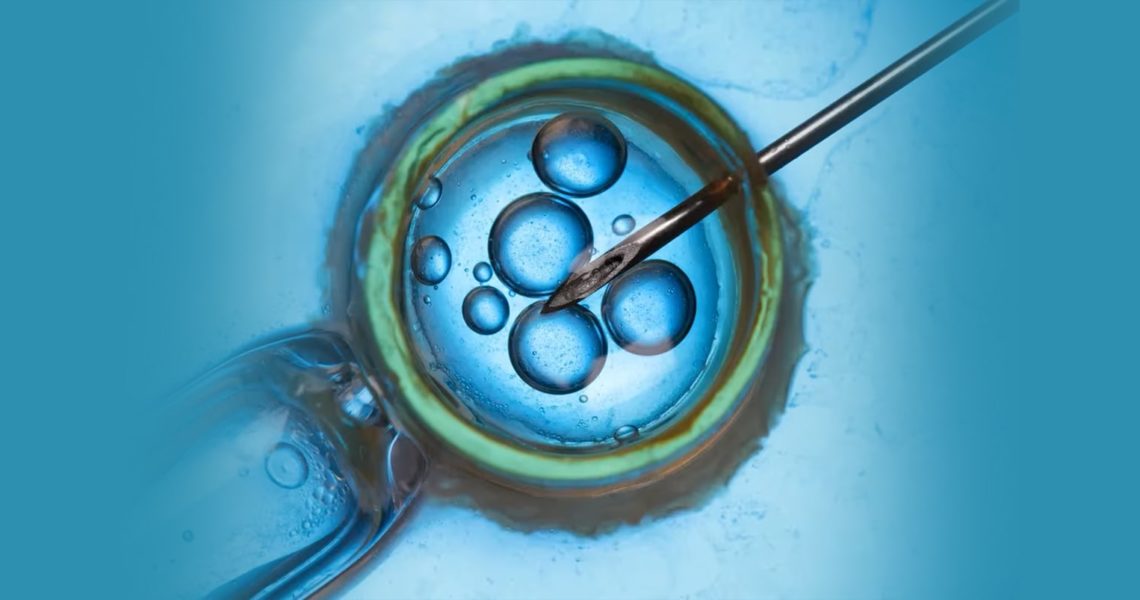In vitro fertilization is one of the assisted reproductive technologies that has taken the medical world by storm. Cited as a boon of new-age technological advancements, IVF is a means of turning the dreams of numerous childless couples into a reality. IVF has been used more often as a first line of therapy for some causes of infertility in recent years due to its high success rate. So, what makes IVF unique and what are the statistics associated with it? This blog delves into the facts and figures surrounding IVF. Read ahead to know more.
What is In Vitro Fertilization (IVF)?
The procedure of combining a woman’s egg with a man’s sperm in a petri dish under laboratory conditions is called in vitro fertilization (IVF). It involves a series of 5 basic steps as mentioned below:
- Stimulation/Super ovulation: Using fertility drugs, several eggs are produced at a time instead of a single egg per month. This step requires a woman to undergo a few transvaginal ultrasounds and blood tests to check the hormone levels.
- Egg retrieval: Through a minor surgery, called follicular aspiration, eggs are removed from the woman’s body. A thin needle is inserted through the vagina into the ovarian follicles. Now, using a suction device, the eggs, along with the fluid are taken out of each follicle, one at a time.
- Insemination and fertilization: Mixing of the man’s sperm with the best quality eggs is called insemination. The fused egg and sperm are stored in an environmentally controlled chamber. Usually, the sperm enters or fertilizes the egg within a few hours after insemination. However, in cases where the chance of fertilization is low, the sperm is directly injected into the egg by means of intracytoplasmic sperm injection (ICSI).
- Embryo culture: After 5 days of fertilization, the embryo develops into a blastocyst, which has several actively dividing cells. It is during this step that the embryo is screened for specific genetic disorders as well.
- Embryo transfer: Embryos are placed into the woman’s womb 3 to 5 days after egg retrieval and fertilization. Using a thin tube called catheter, the embryos are introduced into the woman’s vagina, through the cervix, right up to the womb. If the embryo implants into the lining of the womb, pregnancy is said to take place.
Conditions where IVF is used
In vitro fertilization is especially useful in the following conditions:
- Absence of fallopian tubes
- Damaged or blocked fallopian tubes
- Advanced age of woman (over 35 years)
- Endometriosis
- Male factor infertility
- Azoospermia ( absence of sperms in ejaculate)
- Oligospermia (less than normal sperms in ejaculate)
- Erection or ejaculation problems
- Unexplained infertility
- Multiple cycles of failed ovulation induction/ IUI
IVF Failure Reasons

Have you ever thought about the reasons behind the failure of IVF? Read below to find out.
- Age of female: With increasing age of a woman, the quality and quantity of her eggs falls down.
- Quality of embryo: Even though an embryo seems healthy in the lab, there’s a chance that it won’t implant into the uterus because of other reasons.
- Ovarian response: If a poor ovarian response happens to a daily injection of fertility hormones, it may pose difficulties in the progress of IVF procedure.
- Implantation issues: This is the inability of the embryo to implant itself in the uterus. Uterine polyps, an early rise in progesterone, an excessively thin endometrial lining, or uterine infection could all be the cause of this.
- Lifestyle: Smoking negatively impacts fertility.
- Chromosomal abnormalities: Sometimes, IVF can fail if the embryos have chromosomal anomalies. This is mostly the case with women over the age of 35 years.
IVF Facts Sheet
Below are some interesting metrics surrounding IVF technique:
- Success rate: In India, many fertility clinics in India have shown results that are 70 – 80% successful if the woman undergoing IVF is below 35 years. For those over 40 years, the success rate is reduced to 40-50%.
- Age: It has been observed that women of lower age groups, are most likely to have higher IVF success rates when compared to their older counterparts. Females in their 20s have higher success rates of pregnancy as this is the period when they are most fertile. According to the Centers for Disease Control and Prevention (CDC) data, women under 35 years have a 52% chance of attaining pregnancy with just one round of IVF. For women in their 40s, there is approximately 20% chances that the IVF cycle will work and 14% if going for live birth. Those over 45 years and still wishing to conceive, have only a 3% chance of achieving pregnancy by an IVF treatment and only 1% for the live birth.
- Number of embryos: The number and quality of the embryos are one of the biggest deciding factors for the success of an IVF treatment. Usage of poor quality embryos is, by far, the reason why most IVF treatments fail. To eliminate this, techniques like pre-implantation diagnosis (PGD) are used to choose the most efficient embryo for IVF treatment. Single embryo transfers are preferred for healthy pregnancy results. With multiple embryos, there are increased chances of having twins and multiple births.
To summarize briefly, IVF treatments are a highly sought-after option for couples striving to conceive. The procedure has given hope to numerous individuals as it is a means to achieve pregnancy even if the woman is past the child-bearing age. However, it is important to weigh the pros and cons before opting for IVF.
NU Fertility @ NU Hospitals is one of the top IVF clinics in Bangalore, India. It boasts round-the-clock patient care, thanks to its dedicated team of fertility experts. With keen interest in each individual case, the specialists toil hard to make your dream of having a child become possible. The state-of-the-art equipment and latest techniques to treat infertility have made it possible for many couples to see a glimmer of hope when they come here. Consult our fertility specialists at NU Fertility and avail the best treatment plans!
References:
- ART Success Rates. Centers for Disease Control and Prevention (CDC). https://www.cdc.gov/art/artdata/index.html.
- Fertility treatment 2021: preliminary trends and figures. Human Fertilization & Embryology Authority. https://www.hfea.gov.uk/about-us/publications/research-and-data/fertility-treatment-2021-preliminary-trends-and-figures/.
- In Vitro Fertilization (IVF). Medline Plus. https://medlineplus.gov/ency/article/007279.htm.
- IVF by the Numbers. Penn Medicine. https://www.pennmedicine.org/updates/blogs/fertility-blog/2018/march/ivf-by-the-numbers#:~:text=IVF%20Fast%20Facts&text=21.3%20percent%3A%20The%20chance%20of,according%20to%20SART’s%202015%20report.
- Why does IVF fail? The Fertility & Gynaecology Academy. https://www.fertility-academy.co.uk/blog/why-does-ivf-fail/.
Author: Dr. Sneha J



